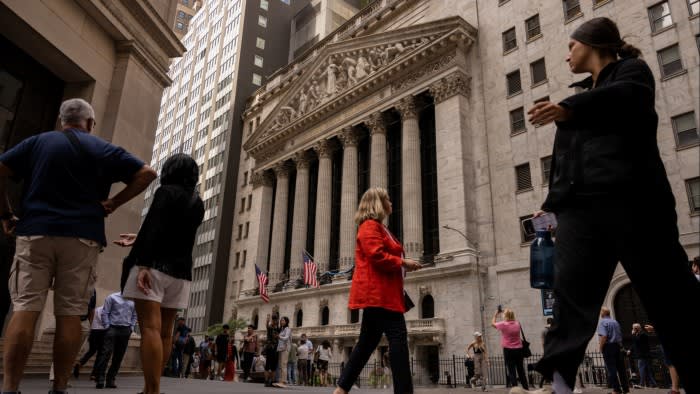Stay informed with free updates
Simply sign up to the US equities myFT Digest — delivered directly to your inbox.
Rising stock prices, falling interest rates and the impending presidential election encouraged a wave of large share sales in the US market in September, with so-called follow-on sales by listed companies hitting their highest level since the capital markets boom of 2021.
US-listed follow-ons raised more than $20bn in September, the most in a single month since November 2021, according to Dealogic. Follow-ons include shares sold directly by a listed company to raise new capital, as well as large trades by existing investors such as private equity firms.
“People are taking advantage of [the] improved market backdrop and a lower volatility environment before the election period,” said Brad Miller, co-head of Americas equity capital markets at UBS. “It set up a perfect window for follow-on activity.”
Some of the larger recent deals included $1.1bn of shares in cruise line Viking, raising cash for the private equity and pension funds that took it public earlier this year. Meanwhile GE Aerospace sold $1.3bn of stock in GE Healthcare to reduce its debts.
The uptick should provide some reassurance for fee-starved bankers and prospective listing candidates after a third consecutive year of underwhelming volumes in the market for initial public offerings. A healthy follow-on market is often seen as a prerequisite for a recovery in the IPO business, where deals are riskier and take longer to complete.
It is also good news for private equity firms, many of which have been under pressure to sell down their holdings in listed companies to return cash to investors.
After a volatile summer dominated by concerns about the outlook for growth and interest rates, the S&P 500 returned to record levels this month after the central bank cut interest rates by half a percentage point and investors grew more confident that it would pull off a long hoped-for “soft landing” — bringing inflation back to target without a serious economic downturn.
“One thing we’ve been hearing from investors for a long time is they just wanted the rate cuts to start,” said Clay Hale, Wells Fargo co-head of equity capital markets. “Now that first cut is in the rear-view mirror . . . it has given people a bit more confidence and conviction that there aren’t going to be any big surprises.”
Besides the increase in the absolute amount of cash raised, several bankers said they had also been encouraged by healthy investor appetite, which allowed companies to sell large blocks of shares at relatively small discounts.
“Follow-on discounts have narrowed from where we were in the first half of the year . . . [and] deals have been well oversubscribed,” added Miller.
September is traditionally also a busy month for IPOs, but the uncertainty surrounding the Fed meeting in the middle of the month narrowed the window for new listings, which require lengthy investor roadshows. Most large companies had already pushed back their plans to 2025, when bankers are hoping to finally see a return to more normal volumes.
Follow-on volumes are also expected to taper off in the next few weeks as companies enter blackout periods around their third-quarter earnings reports, and the US election increases the likelihood of market volatility.
https://www.ft.com/content/db3c999c-72b4-4fb9-a85e-d78192475d6b


